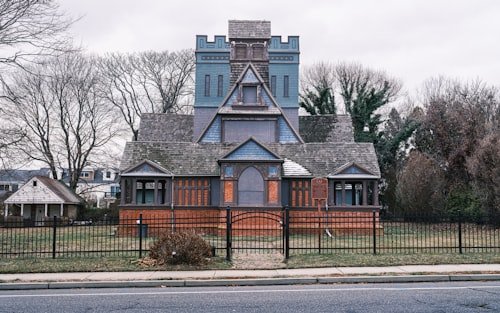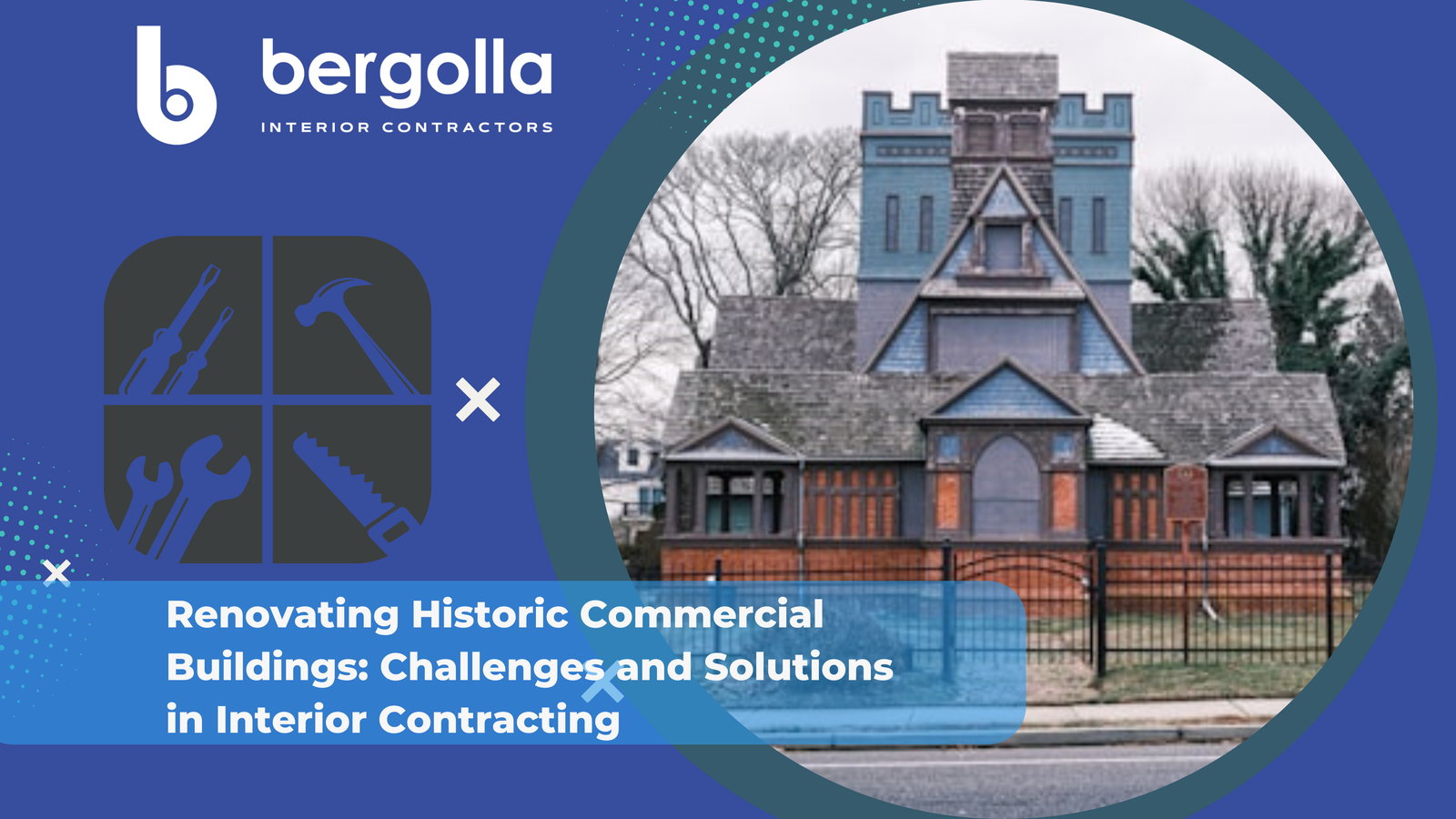Historic commercial buildings are treasured for their architectural charm, cultural heritage, and long-standing presence in the community. But breathing new life into these spaces isn’t as simple as standard remodeling. Renovating a historic building involves unique challenges in interior contracting, including compliance with preservation codes, structural issues, and the need to preserve original details, all while making the space modern and functional.
Whether you’re transforming a century-old warehouse into office space or converting a vintage storefront into a restaurant, here’s what you need to know about the challenges and solutions of interior contracting for historic commercial renovations.
Challenge 1: Navigating Preservation Regulations
Problem:
One of the biggest hurdles is working within the guidelines of historical preservation. These rules are designed to protect original architecture, materials, and design elements, but they can limit what changes can be made.
Solution:
- Consult with local historic preservation offices early in the project
- Work with an interior contractor experienced in landmark restoration
- Focus on reversible or non-invasive upgrades
- Use period-appropriate materials where required
Collaborating with preservation experts ensures that your renovation complies with legal requirements while respecting the building’s historical value.

Challenge 2: Outdated or Damaged Infrastructure
Problem:
Older commercial buildings often have aging electrical, plumbing, and HVAC systems, which can be hazardous or non-compliant with current codes.
Solution:
- Conduct a full building inspection before starting the renovation
- Replace outdated wiring and piping with modern, energy-efficient alternatives
- Upgrade mechanical systems without compromising architectural integrity
- Use concealed infrastructure methods to preserve aesthetics
Modernizing infrastructure improves safety, efficiency, and comfort, without compromising the historic character of the building.
Challenge 3: Preserving Original Architectural Details
Problem:
From intricate moldings to exposed brick walls and hardwood floors, historic interiors often feature irreplaceable craftsmanship. Poor renovation choices can destroy these details.
Solution:
- Carefully document all historic features before demolition
- Restore rather than replace original elements whenever possible
- Use skilled craftsmen familiar with historical finishes
- Match new materials to the original in color, texture, and quality
This approach maintains the authentic look and feel of the space, which is often a key selling point for tenants and customers.
Challenge 4: Window and Door Restoration
Problem:
Historic windows and doors may not meet modern energy efficiency or security standards, yet replacing them can violate preservation guidelines.
Solution:
- Repair existing frames and glass using preservation techniques
- Add weather stripping and storm windows for insulation
- Use custom-made replicas when full replacement is required
- Upgrade locks and hardware without altering the appearance
These updates enhance performance while retaining the character of the façade.
Challenge 5: Space Reconfiguration Limitations
Problem:
You may want to reconfigure the interior for modern use, like creating open office layouts or ADA-compliant restrooms, but existing load-bearing walls or floor plans can be restrictive.
Solution:
- Work with structural engineers to assess the feasibility
- Use non-load-bearing partitions to divide space
- Adapt design to existing layout where possible
- Ensure all updates meet current building codes and accessibility standards
Flexibility and creativity in space planning are essential to adapting historic structures for contemporary use.
Key Tips for Successful Interior Contracting in Historic Buildings
- Hire experienced historic renovation contractors
- Budget for unexpected discoveries, like hidden damage or outdated systems
- Use detailed architectural surveys and 3D scans for planning
- Involve preservation authorities early to avoid costly delays
- Balance aesthetics with performance, and modern comforts can coexist with vintage style
Benefits of Renovating Historic Commercial Properties
Despite the challenges, revitalizing a historic commercial space can offer impressive rewards:
- Unique architecture and character not found in modern builds
- Tax credits and grants for historical preservation projects
- Attractiveness to high-end tenants and businesses
- Increased property value and long-term ROI
With the right interior contracting strategy, these projects can become iconic community assets.
Final Thoughts
Renovating historic commercial buildings requires skill, patience, and a deep respect for the past. Interior contractors must navigate preservation laws, modern safety requirements, and structural limitations while enhancing functionality and design.
By partnering with professionals experienced in historical interiors and employing thoughtful solutions, you can bring new purpose to old spaces without sacrificing their charm. Whether you’re restoring a 1920s theater or a turn-of-the-century office building, a well-executed renovation can preserve legacy and inspire modern success. Contact us today!





